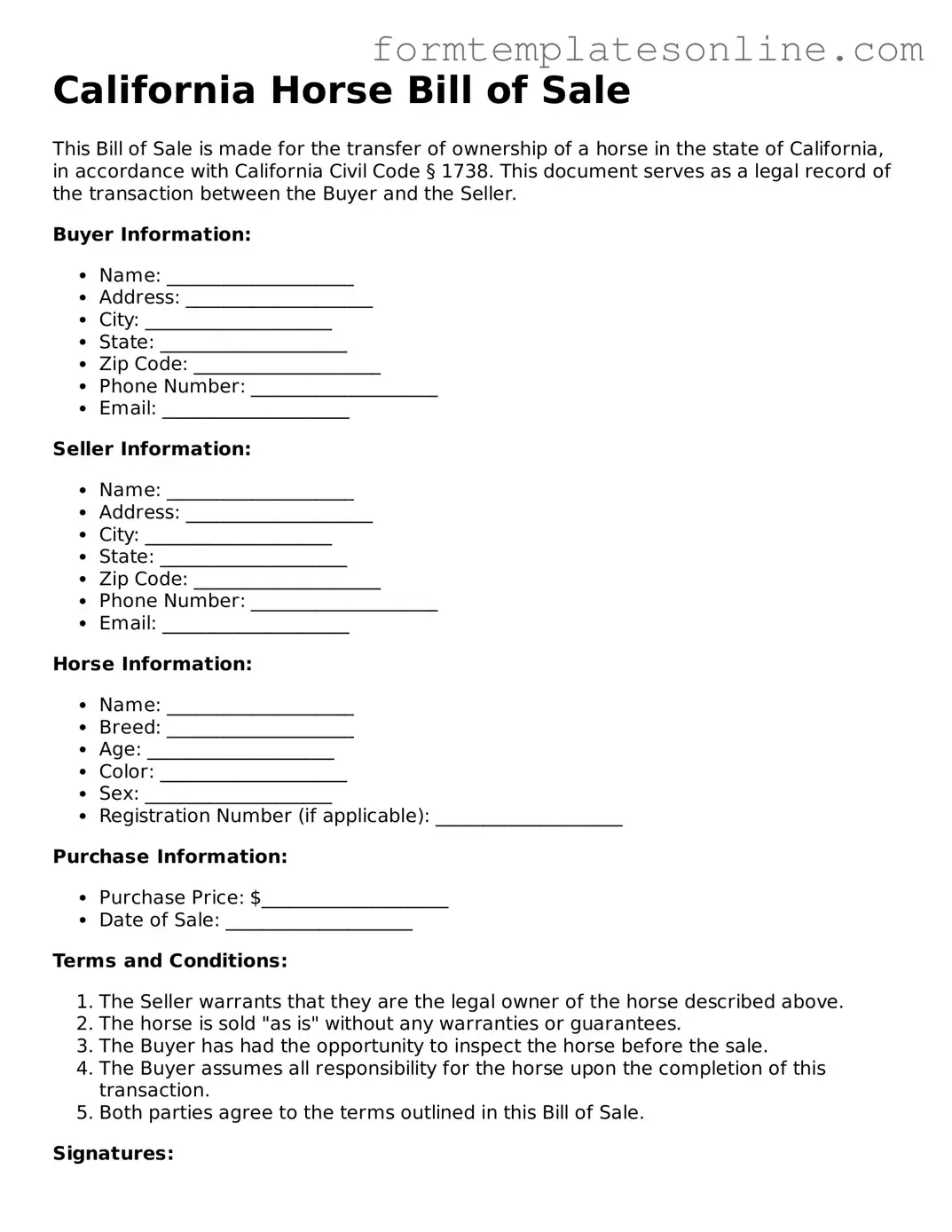What is a California Horse Bill of Sale?
A California Horse Bill of Sale is a legal document that records the transfer of ownership of a horse from one party to another. This form serves as proof that the buyer has purchased the horse and that the seller has relinquished their rights to it. It typically includes essential information such as the names and addresses of both the buyer and seller, a description of the horse, the sale price, and the date of the transaction. Having this document can help protect both parties in case of disputes regarding ownership or condition of the horse in the future.
Is a Horse Bill of Sale required in California?
While a Horse Bill of Sale is not legally required in California, it is highly recommended. This document provides a clear record of the transaction, which can be crucial if any issues arise later on. Without it, proving ownership or the terms of the sale can become complicated. Additionally, some buyers may request a bill of sale for their records or to register the horse with certain organizations, so having one prepared can facilitate the process.
What information should be included in the Horse Bill of Sale?
When drafting a Horse Bill of Sale, it is important to include specific details to ensure clarity and legality. Key elements should encompass the full names and contact information of both the seller and buyer, a detailed description of the horse (including breed, age, color, and any identifying marks), the sale price, and the date of sale. It is also wise to note any warranties or guarantees about the horse's health or behavior, if applicable. Finally, both parties should sign and date the document to validate the agreement.
Can a Horse Bill of Sale be used for other animals?
While a Horse Bill of Sale is specifically tailored for the sale of horses, the concept can be adapted for other animals as well. However, it is advisable to use a form designed for the specific type of animal being sold. Each species may have unique considerations regarding health, registration, and care, which should be addressed in the sale document. Customizing the bill of sale ensures that all necessary information is captured and that both parties understand their rights and responsibilities.
What happens if there are disputes after the sale?
If a dispute arises after the sale of a horse, the Horse Bill of Sale can serve as a vital piece of evidence. This document outlines the agreed-upon terms of the sale and can clarify issues such as ownership, payment, and any warranties made by the seller. In cases where disagreements cannot be resolved amicably, having a well-drafted bill of sale may help in legal proceedings, as it provides a formal record of the transaction and the intentions of both parties at the time of sale.
Is it advisable to have the Horse Bill of Sale notarized?
While notarization is not a requirement for a Horse Bill of Sale in California, it can add an extra layer of authenticity and protection. Notarizing the document ensures that both parties' identities are verified, which can help prevent fraud. Additionally, a notarized bill of sale may be viewed more favorably in a legal context, should any disputes arise. Therefore, while it is not mandatory, having the document notarized is a prudent step for both buyers and sellers.
